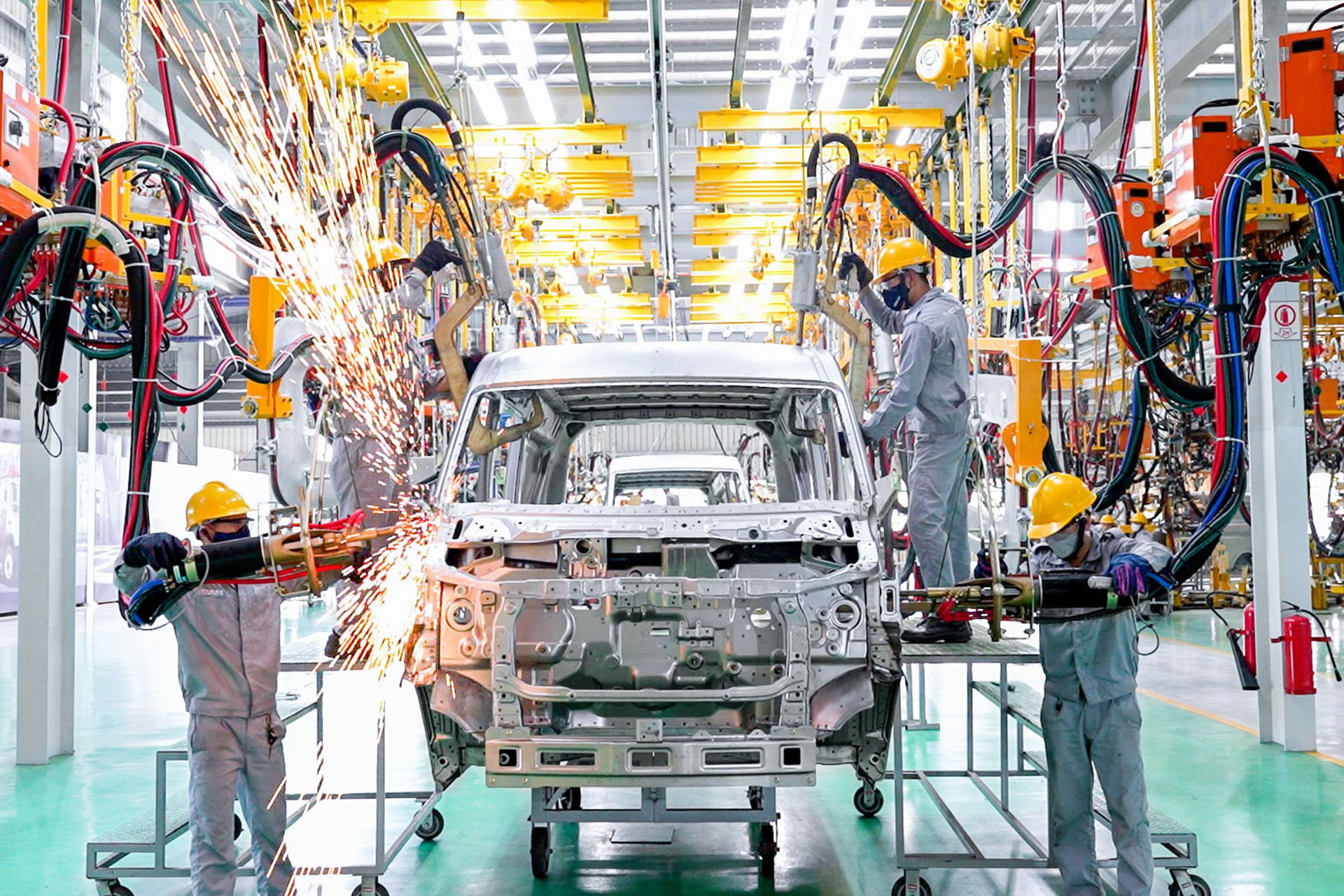Core Tenets of Resolution 68: Unleashing Vietnam’s Economic Potential
According to Michael Kokalari, Resolution 68 recognizes the private sector as not just a driver of economic growth but also a pioneer in science, technology, and innovation. The resolution aims to foster large-scale private enterprises, with a target of 20 prominent businesses by 2030 that can deeply engage in global value chains and spearhead industrialization. Supporting the efficient operation of these enterprises will boost innovation and generate high-quality employment opportunities.

The core vision of Resolution 68 is to foster a rapidly growing, sustainable, and high-quality private sector.
VinaCapital’s expert, Michael Kokalari, highlights three key aspects of Resolution 68: preferential mechanisms for the private sector, including a strategy to develop large-scale private economic groups; ensuring fair treatment and a level playing field for private enterprises compared to state-owned businesses; and a roadmap for state-owned enterprise equitization and restructuring to expand the private sector’s influence.
VinaCapital notes that the private sector faces challenges such as limited access to capital, cumbersome administrative procedures, and a low level of technology application. Resolution 68 aims to address these bottlenecks by reducing the time, cost, and procedures related to business operations by at least 30%. This will be achieved through simplified licensing, reduced compliance burdens, and a shift from pre-inspection to post-inspection for many business types.
Vietnam’s Economy: Poised for Robust Growth
The World Bank’s updated report for Vietnam forecasts a 6.8% growth in the country’s real gross domestic product (GDP) in 2025 and 6.5% in 2026. Mariam J. Sherman, World Bank Director for Vietnam, Cambodia, and Laos, states that Vietnam’s economy is expected to continue its strong performance in the next two years. However, Vietnam can utilize its fiscal space to better prepare for heightened uncertainties.
Mariam J. Sherman emphasizes the importance of public investment in driving growth, particularly in urban infrastructure, transportation, and energy sectors. This will be effective if the government can increase the scale of public investment and ensure efficient spending.
Similarly, the International Monetary Fund (IMF) predicts that Vietnam’s economic scale will reach an estimated $491 billion by 2025, ranking 34th globally and 5th in Southeast Asia. By 2029, IMF estimates Vietnam’s economy to surpass Thailand and become the 32nd largest economy in the world, with a projected size of $627 billion.

By 2039, CEBR estimates that Vietnam’s economic scale could reach $1,410 billion.
Notably, the CEBR report “World Economic League Table 2025” suggests that Vietnam’s economic ranking could rise significantly in the future. By 2029, with a projected GDP of $676 billion, Vietnam is expected to overtake Singapore and Malaysia and catch up with Thailand, securing the 33rd position.
Looking further ahead, by 2039, CEBR estimates that Vietnam’s economy may reach $1,410 billion, propelling the country to 25th place globally. This would mean surpassing Thailand, Singapore, and Malaysia to join the group of the world’s top 25 largest economies.
To achieve its goal of becoming a high-income nation by 2045, Vietnam needs to maintain an average annual growth rate of around 5% per capita. With global trade declines and an aging population, CEBR recommends that Vietnam significantly improve policy implementation efficiency, especially in areas severely affected by automation and climate change.
Breakthrough in Credit for the Private SectorAccording to the State Bank branch in Region 2, as of the end of April, the outstanding loans of financial leasing companies in Ho Chi Minh City reached VND 30,853 billion, leveraging new private economic development. Notably, over 95% of this amount was in financial leasing, mainly to meet the demand for purchasing, renewing machinery, equipment, and technology for small and medium-sized enterprises.Mr. Nguyen Duc Lenh, Deputy Director of the State Bank of Vietnam, Branch in Region 2, assessed that this figure shows the increasingly clear role of financial leasing activities in capital provision for the private sector, especially small and medium-sized enterprises that are in the process of restructuring production and modernizing technology

Resolution 68 aims to address bottlenecks and reduce time, costs, and procedures related to business operations.
Mr. Lenh added that Resolution 68 is a large-scale, comprehensive, and appropriate strategy for the development of the digital age. Specifically, for the banking sector, Resolution 68 is opening up three breakthroughs for credit to the private sector. These include innovating lending methods, standardizing financial information, and developing non-traditional capital supply channels.“In the context of Resolution 68 being put into practice, the requirement is to coordinate between enterprises and credit institutions. Enterprises need to improve governance and financial transparency, while credit institutions need to diversify lending methods, especially data-based and credit-based ones. Transparent and interlinked information between agencies will become a valuable resource for credit institutions to effectively assess, approve loans, thereby ensuring the “right choice” in credit activities, controlling risks, and promoting private economic growth,” said Mr. Lenh.
Billionaire Tran Dinh Long: ‘Outsourcing Expedites, But Homegrown Manufacturing Protects Our Railway Industry’
“The North-South high-speed railway is a once-in-a-millennium opportunity,” asserts Tran Dinh Long, Chairman of Hoa Phat Group. He emphasizes that while engaging foreign contractors could expedite the project, nurturing the domestic railway industry and promoting local production are paramount.





















